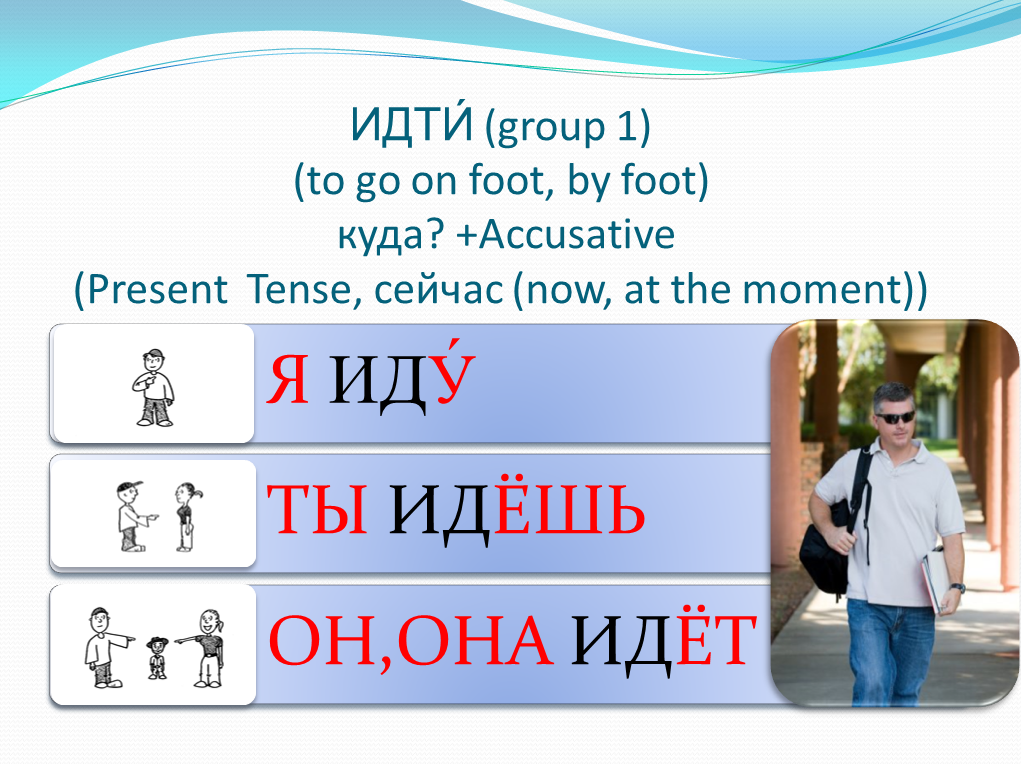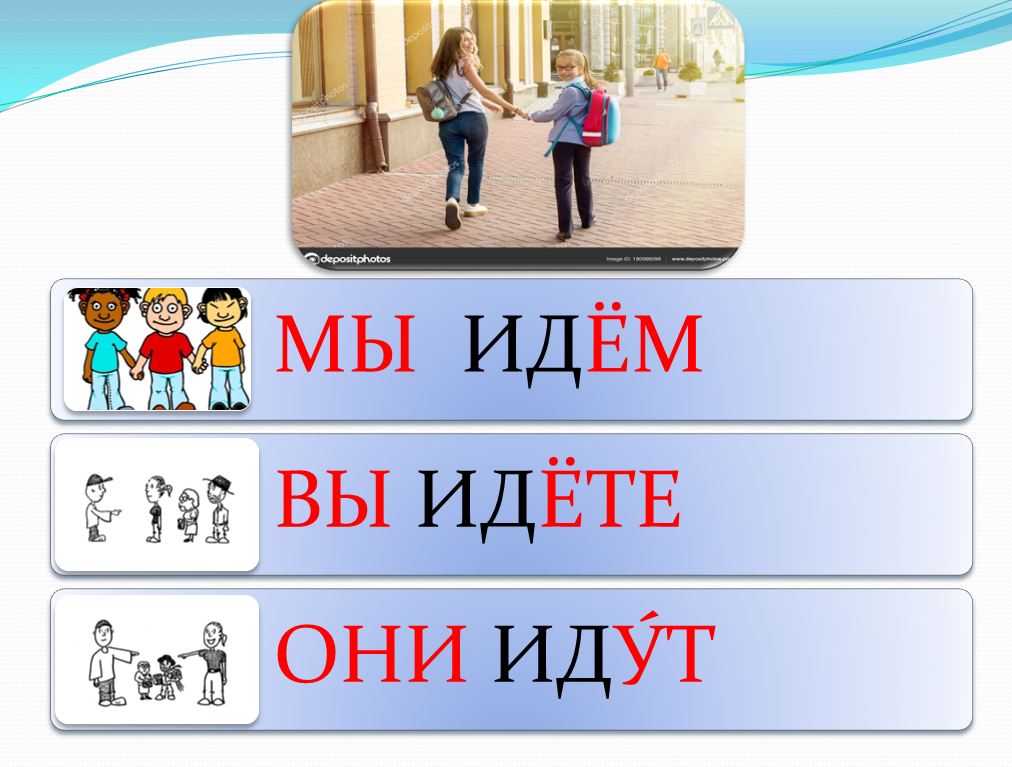Exercise 1. The verb "идти" in the Present tense.
In Russian, there are 4 main verbs that denote movement: идти/ходить (to go on foot, by foot) and ехать/ездить (to go by any type of wheeled transport). If we want to know about the direction of movement, we ask the question КУДА? Куда ты идёшь? Куда ты едешь? (where are you going?). And when we answer that question, when we speak about the direction of movement, after these verbs we always use the preposition В or НА and the Accusative Case. We use two general types of verbs to talk about motion in Russian. For our purposes we will call them groups идти (one direction) and ходить (movement in different directions, back and forth, in a circle). It is convenient to use them because whoever you are speaking with understands at once what time and direction you are talking about and how often you move that way. It is better to learn these verbs in pairs. The verb идти and ходить belong to group 1 and changes in the same way as the verbs of this group. The verbs ехать and ездить belong to group 2 and change in the same way as the verbs of this group. Listen and repeat. Follow your pronunciation and accent.


